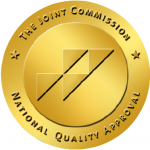Some sniff it. Some inject it. Some shoot it. Some have scabs on their faces from tweaking all night in front of a mirror with tweezers. Some wear suits and conduct business in skyscrapers. Crystal meth is abused in a variety of ways, and it cuts across all social, cultural, and socioeconomic demographics. It floods the streets in Iowa, New York, California, and everywhere North, South, East, and West.
Crystal meth, the crystallized form of methamphetamine, is highly (and I mean HIGHLY) addictive stimulant drug. People addicted to meth suffer physical and psychological dependence. While the opioid crisis continues to get most of the attention, methamphetamine hospitalization rose over 240% since 2005 (opioid hospitalization, in contrast, has risen about 45% in that same time).
Is meth physically or mentally addictive? The short answer: yes and yes. Treatment for meth addiction needs to focus on all facets of addiction—mental, physical, and emotional.
A Century of Methamphetamine
Methamphetamine, the lab-made synthetic stimulant, was first derived from amphetamine in Japan in 1919. Originally used as a nasal decongestant and weight loss supplement for obesity, meth arrived in the US in the 1930s. During the 1950s and ‘60s, recreational meth use surged, and it was outlawed in 1970 as part of the Drug Abuse and Regulation Control Act.
Since then, crystal meth has become one of the most commonly used drugs in America, and it has often been used as a cheaper, and more potent, alternative to cocaine. Sometimes referred to as a “party drug” because its use is characterized by binges that can keep the user awake for anywhere between 3 – 15 days straight, there’s nothing fun about meth addiction.
The Hidden Crystal Epidemic
It is so addictive, addiction researchers and treatment specialists have declared that meth is harder to treat than opioid addiction. Meth use has grown faster in America in the last decade than heroin, with more than 12 million Americans reporting having at least tried it, and at least 1.5 million people are estimated to be regular users.
When methamphetamine is referred to as “Crystal,” it is a specific type of meth that is crystallized. This makes it easier for users to smoke. It is also usually a more chemically pure form of meth than its powdered or tablet forms. Crystal meth’s street names include “glass,” “ice,” and “tweak.” Tweaking, when someone hasn’t slept for days or weeks during a meth binge, is a normal state for a meth user, with some even blaming “tweaking” for at least 20% of crime in certain places in America.
People addicted to meth are not bad people. Like all addictions, people who suffer from Substance Use Disorders (SUD) are sick people suffering from a physical and mental disorder that affects the user, their family, friends, and the community. Understanding that meth addiction is a disease and not a crime, many public health initiatives try to keep meth addicts healthy and disease-free until they are ready to seek treatment.
Another disturbing trend of meth addiction is the increase of methamphetamine present at pregnancy and birth. A recent study published in the American Journal of Public Health identified over 82,000 pregnancies affected by methamphetamine use disorders. Sadly, this addiction is so powerful that not even pregnancy can stop some women from using. It’s not that these women don’t care, it’s that this addiction is more powerful than almost anything else in their lives.
Physical and Mental Addiction
Methamphetamine addiction has severe short- and long-term complications. Meth creates a stimulated, euphoric high that is more intense than cocaine. Some of the symptoms of the tweaking high include increased wakefulness, decreased appetite, increased body temperature, and increased blood pressure. Using too much meth in a short amount of time can result in fatal overdose.
Chronic, or long-term, abuse can have harmful effects on the user’s physical health that sometimes is not reversible. Severe dental problems, known as “meth mouth,” is frequent with meth addicts. Marked by extreme tooth decay and gum disease caused by dehydration, poor dental hygiene, and smoking crystal meth, meth mouth is an extremely painful and stigmatizing effect of meth addiction.
In addition, withdrawal symptoms include extreme weight loss, skin sores from intense scratching and skin picking, anxiety, confusion, insomnia, violent behavior, paranoia, and hallucinations. Long-term cognitive impairment can include reduced coordination and impaired verbal learning caused by permanent changes in the brain’s dopamine system.
The physiological impairments may reverse after being abstinent from the drug for over a year; however, sometimes the shakiness, loss of coordination, and cognitive abilities never fully recover. Recent studies have even suggested that methamphetamine users have an increased risk of developing Parkinson’s disease.
Treating Crystal Meth Addiction
While treating meth addiction is difficult, people can and do recover. Finding the right treatment program that addresses all facets of addiction—physical, mental, emotional—is vital to consider. Recovery from meth utilizes therapeutic modalities, experiential therapy, 12-step meetings, and a loving support system. Once the drug use has been stopped, treatment is essential to help the ex-addict learn to live clean without having ever to use drugs again.
Life can be good again and we’d like to show you how.






